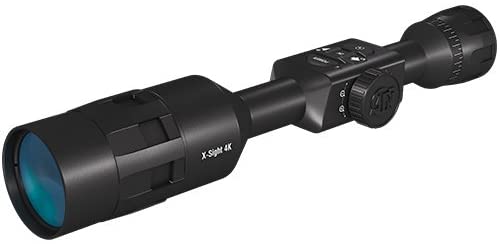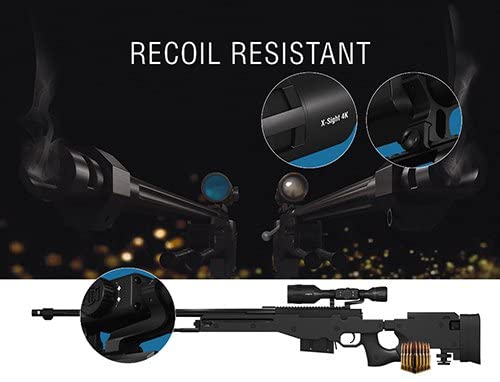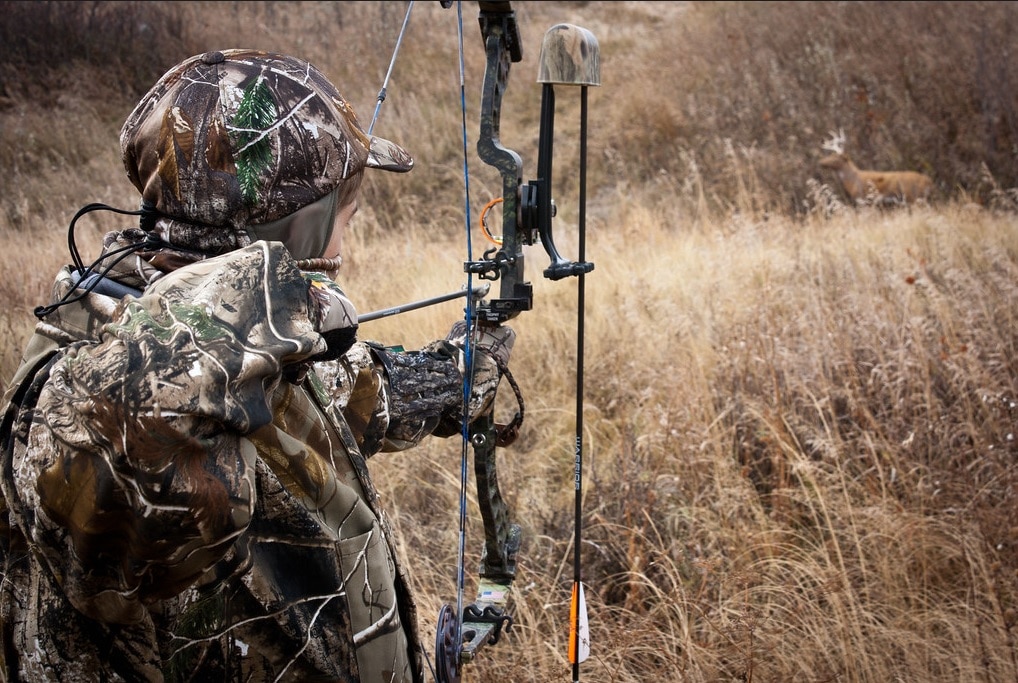
For years, 22LR is the most favorite rifle among shooters all around the world.
In benchrest shooting, participants set the rifle on the bench fixed with some nuts and bolts and that is why it is called benchrest shooting.
If a shooter uses any 22LR rifle, the standard range may vary from 150 to 200 meters. According to military expertise, the range may raise to 500 meters at best. No shooter can hit the target accurately without a scope from this far. So, long-range shooting rifles are always attached with scopes for higher magnification and a better eye-sight.
Now, in this article, we are going to give you the 3 tips to choose a scope for 22LR-Benchrest rifle. Interested to find more about it? Please read and find out yourself.
Page Contents
3 Effective Tips to Choose a Scope for 22LR-Benchrest
You are now on the brink of choosing the best scope for 22lr benchrest. Perhaps, you might be going to win the next ARA competition with it. Such is why it is one of the major investments that may cost as much as or sometimes more than the rifle itself.
Tip 1: Choosing the Right Magnification Power
Study your options very carefully while considering this feature. You are equipped with a 22LR rifle. You have already started your career or you are planning to start or whatever, a scope is always the most bosom friend in your journey as a shooter.
When you are talking about benchrest shooting, remember that you are shooting from very far. In the long-range shooting, a shooter should consider magnification power as one of the prime factors.
In practical terms, the magnification is articulated as a number followed by an X. A 10X scope means that it usually magnifies the image ten times higher that of the original. Considering the magnification power, long-range scopes are often categorized as fixed and variable power.
Like a prime lens of a DSLR camera, you cannot change the magnification with a fixed powered scope. It has a fixed degree of magnification. It is less costly than a variable power scope. But the main disadvantage is that you cannot adjust the magnification power at your will.
On the other hand, you will get a lower and upper limit for the magnification with a variable powered scope. The magnification power is adjustable as per your requirement. Longer the shooting distance makes the magnification power higher. But the downside is cost. The variable power scope is more expansive than the fixed one.
To select the best magnification for your shooting, there is no hard and fast rule. If the shooter never plans to engage targets beyond 300 meters, there is no use in buying a 25-power scope. For benchrest shooting, the fixed power should be between 4x to 25x. On the other hand, the variable power might be varied from 10x to 40x.
In my personal opinion, if you can sacrifice the cost, please choose a variable power scope. It will be your best companion all-through the career.
Tip 2: Considering the Suitable Mechanical Features
Mechanical precision and optical clarity are very important while choosing a scope. We can consider 1/8 MOA as a fine mechanical precision. This much precision is very essential for benchrest shooting. Otherwise, target hitting will be more tough for you.
Magnification and optical clarity are required to get a clear view of the target.In this case, objective lens is the main factor to be considered. The larger the objective lens, more light can enter through the main tube, which generally results in a clearer view of the target. It can be used in the lower light condition as well.
Now we will talk about turrets. The overall purpose of a turret is to make the necessary adjustments in the scope lens to minimize optical error.Turrets are the little knobs on the top and most commonly the left-hand side of the scope. Usually there are two knobs in a scope.
Tip3: Size, Weight and Budget
‘Weight don’t matter shooting benchrest’. Why? The answer is simple. You are shooting from a position in which the rifle is placed on some hard surface. So, you don’t have to worry about the weight of the scope. The surface will carry the entire load of the rifle.
But you have to be cautious while choosing the size of the scope. Size does matter. The scope must fit with the rings placed on the top of the rifle. Otherwise, the scope cannot be mounted with the rifle.
The scope is a cylindrical tube with a fixed diameter. The light reflects on the object and comes through the one end of the scope. On the other end of the scope, your eyepiece is placed.
There are two primary sizes available in the market. 1″ of diameter and 30mm of diameter. Scopes with 1″ diameter is largely popular in the US market. But recently 30mm scopes are overtaking the popularity of 1″ scopes. But, here the most unspoken factor is that the tube must fit the rings.
Another most unavoidable factor is budget. Money always matters. Like any other product, you must fix a budget for your scope before buying it.
My advice in this regard is quite simple. At the very beginning of your market research, please determine the features you need in your scope. Then check the best price range for the scope embedded with these features. And then go for the best price for a value buy.
Get Your Rifle Scope Today!
In this article, we have tried to focus on the most important 3 Tips to Choose A Scope for 22LR-Benchrest. We ensure that after reading this article you are easily able to choose a suitable scope for your rifle without any outside help.
You are smart and smart shooters will carefully evaluate all the available options to find a scope that fits their needs.
Please don’t waste more of your time looking for useless features in your scope that increases your budget. Instead, you can follow our tips mentioned here and make a good choice.
So, hit the target right and get a BULLSEYE!
Determined to improve your bench rest shooting? Here are some tips to follow!
Benchrest shooting is one of the most challenging shooting disciplines as it’s all about unique precision. Shooting from a bench is crucial to achieve the desired zero and find the level of accuracy your rifle can provide. Even if you don’t plan to become a bench rest competitor, you should practice bench rest shooting to improve your hunting performance.
Here are some tips to follow when you do bench rest shooting:

Have a sturdy foundation
You have to let your rifle do its job and reduce the risk for human error as much as you can. The bench should be solid and have no vibration whatsoever. You don’t need to spend hundreds of dollars on an expensive bench. As long as it is heavy, with a flat level surface for your rest/sandbags, any table will work. Ideally, you want it to be easy to access from the right and left. Don’t look for pricy chairs either; you need one that gives you the right height for a comfortable sitting. You should be able to lean into the rifle and ground your elbows effortlessly.
You can use old sandbags, commercial rests, or adjustable rifle seats for the rest. Remember that you need several handbags or a high rest for a fore-end and a lower rest for the stock’s toe. You might want to have some bags to protect your elbows from the recoil.
Find a way to absorb recoil
The benches will accentuate the recoil and your body will barely have space to take it. Even if the problem isn’t severe with small calibers, shooting big rifles will be unpleasant. Even a towel folded over your shoulder can do the trick.
Always wear hearing protection and glasses and have a recoil shield in your range bag. The most straightforward method to decrease recoil is to add gun weight. You can, for instance, use an adjustable gun rest with a central tray underneath and a harness for the butt. When you place a 25-pound bag of lead shot in the tray, you practically add 25 pounds to the rifle.
Such a gun rest will improve the experience when shooting groups. We want to remind you that using weights will cause the rifle to recoil various ways. Therefore, the point of impact will shift; the more recoil you have, the more it will shift.
Keep in mind the basics: eyes, ears, and targets
Get your shooting glasses, hearing protection, and spotting scope. Add targets as they come in a wide range of models. You can use old bullseye targets and squares and diamonds for shooting groups. A grid can also help you better see your groups.
Many shooters prefer squares and diamonds because they allow a consistent hold. A multi-layer target will quickly reveal bullet holes and you will easily estimate your group shooting when combining the squares with a half-inch grid system.
Hone your bench technique
The primary purpose of the bench technique is to let the rifle fire with minimal interference. Comfortably sit on the bench and lean forward into your rifle. You need the proper height to naturally curl your hand around the pistol grip while you securely ground your shooting elbow. The trigger finger also has to curl naturally. The length of your fingers, the size of your hand, and stock fit will impact the position; most shooters feel best halfway between the first join and the fingertip.
What do you do with your supporting hand, though? Most will feel the need to reach forward and grasp the fore-end. There’s no right or wrong position with this one, as you only need to make sure that your rifle shoots its best.
Correctly set up the rifle on the bench
Securely rest the rifle to aim at the target; seek that there are no obstructions for the barrel and that all screws are tight. Take a good look at the scope mount, action screws, and ring screws. If this is the first time you use the rifle or the scope, you should practice on paper. Some archers use laser bore-sighters and collimators, whereas others will do the bore-sighting independently and align the barrel on the target. In the end, they adjust the scope.
With a new rifle or scope, you can start on paper by bore-sighting align the scope and bore visually. Unfortunately, bore-sighting doesn’t work with every rifle because you have to see down the barrel. Bore-sighting works with ars, bolt-actions, and single shots. You won’t be able to use slide-actions, lever-actions, and many semi-autos.

Don’t rush into it
Bench rest shooting takes time and you should never speed up the process. You have to be patient and pay attention to the most minute detail while keeping your barrel cool. If you practice in the summer, you should let the barrel cool for some time. Some barrels won’t fire more than a couple of shots without the bullets going from the barrel heat.
Practice your trigger press and breathing techniques
Bench shooting is mainly about the rifle and not about the shooter. However, you need to improve your breathing and trigger press technique. You only have to move your trigger finger using slow, steady pressure until the trigger breaks. The continuous pressure has to go on through and after the shot. The “follow-through” is essential because the shot stops only after the bullet exits the barrel and hits the target.
If you want to improve your breathing and trigger press technique, the bench is one of the best places to practice. Your rifle has to be completely steady and you only need a subtle rearward motion of the trigger finger.
Breathing is also essential. After you load the rifle, you must check if the scope/sights are on the target. Stop moving and deeply breathe a couple of times. Place your finger on the trigger and start pressing. More often than not, you will notice wobbling when shooting. Back off and begin once again. Adjust the sandbags/rest for the best alignment and be consistent.







